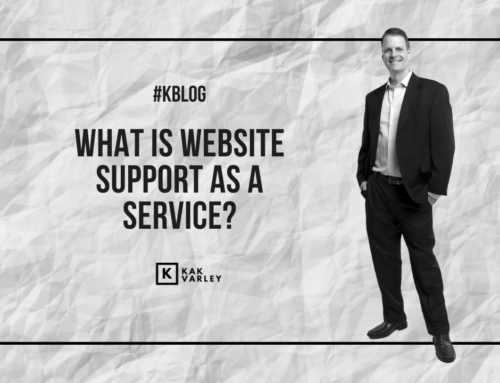
Web design is a multifaceted discipline that combines creativity and technical expertise to craft engaging digital experiences. From the layout and color palette to the typography and interaction, every element plays a crucial role in creating a visually appealing and user-friendly website. In this article, we will explore the key principles and concepts that make up great web design.
Key Takeaways:
- Web design encompasses layout, color, typography, imagery, and interaction.
- User-centric design prioritizes the user experience by understanding user behaviors and needs.
- Responsive and mobile-first design ensures adaptability and cross-device compatibility.
- Minimalism and simplicity promote clarity and enhance user engagement.
- Bold typography and creative fonts add personality and reinforce brand identity.
User-Centric Design
In today’s digital landscape, web design has shifted its focus from purely aesthetics to placing user experience at the forefront. User-centric design prioritizes the needs, behaviors, and preferences of users, ultimately creating intuitive and seamless interfaces. By putting yourself in the shoes of your target audience, you can design websites that cater to their expectations and deliver an exceptional user experience.
To achieve user-centric design, extensive research and testing are essential. Conduct user research to gain insights into your target audience’s preferences, behaviors, and goals. This will help you understand their motivations and pain points, enabling you to design an interface that addresses their needs.
Wireframing and prototyping are crucial stages in the design process. These visual representations allow you to map out the structure and functionality of your website, ensuring that it aligns with your users’ mental models. Through usability testing, you can validate the effectiveness of your design choices and identify areas for improvement.
Ultimately, user-centric design strives to create intuitive and user-friendly interfaces that prioritize the user’s goals. By understanding your audience and continuously iterating on your design based on user feedback, you can create websites that deliver an exceptional user experience.
| Benefits of User-Centric Design | Key Considerations |
|
|
“User-centric design is about empathizing with your users, understanding their goals, and creating a digital experience that exceeds their expectations.”
Key Principles of User-Centric Design
User-centric design revolves around key principles that guide the creation of intuitive and user-friendly interfaces:
- Usability: Ensuring that your website is easy to navigate and understand.
- Intuitiveness: Designing interfaces that align with users’ mental models and expectations.
- Accessibility: Making your website inclusive and usable for all users, regardless of disabilities.
- Consistency: Maintaining a consistent design language and interaction patterns throughout your website.
By incorporating these principles into your design process, you can create websites that are not only visually appealing but also intuitive and enjoyable to use.
Responsive and Mobile-First Design
The prevalence of smartphones and tablets has revolutionized the way we access information and interact with websites. As a result, web designers have had to adapt their approach to ensure that websites are compatible with a variety of screen sizes and resolutions. This has given rise to the concepts of responsive design and mobile-first design.
Responsive design refers to the ability of a website to adapt and adjust its layout and content according to the device it is being viewed on. This means that whether a user is accessing the website from a desktop computer, a smartphone, or a tablet, they will have a consistent and optimized browsing experience. By employing responsive design techniques, designers can ensure that their websites are easily navigable and visually appealing, regardless of the device being used.
On the other hand, mobile-first design takes a proactive approach by prioritizing the design and development of websites for mobile devices before considering the desktop experience. This approach recognizes the increasing number of users who primarily access the internet through their smartphones and acknowledges that these users have different needs and expectations compared to desktop users. By starting the design process with mobile in mind, designers can create interfaces that are intuitive, efficient, and user-friendly.
When developing a website, it is essential to consider the concept of adaptability and cross-device compatibility. This ensures that users can access and interact with your website seamlessly, regardless of the device they are using. By embracing responsive and mobile-first design principles, web designers can provide a superior user experience and cater to the evolving needs of their audience.
Table: Comparison of Responsive Design and Mobile-First Design
| Aspect | Responsive Design | Mobile-First Design |
| Approach | Adapts website to different devices | Prioritizes mobile devices and designs for them first |
| Development Order | Desktop first, then mobile | Mobile-first, then desktop |
| User Experience | Consistent experience across devices | Optimized experience for mobile users |
| Design Considerations | Flexible layouts, media queries | Efficient and simplified interfaces |
| Benefits | Greater device compatibility | Improved mobile experience |
Both responsive design and mobile-first design approaches have their merits and can be implemented depending on the specific needs of a website and its target audience. The choice between the two should be based on careful consideration of user behaviors, preferences, and the devices most commonly used to access the website.
Minimalism and Simplicity
In today’s fast-paced digital world, web users have become increasingly accustomed to information overload and cluttered interfaces. In response, web designers have embraced minimalism and simplicity as design principles to create clean, visually appealing websites that enhance user experience. By eliminating unnecessary elements and incorporating generous whitespace, minimalistic designs allow users to focus on essential content, resulting in a more intuitive and engaging browsing experience.
One of the key characteristics of minimalistic web design is its clean layouts. These layouts prioritize simplicity by using a minimal number of elements, such as a clear navigation menu, strategic placement of content, and organized sections. The absence of clutter not only enhances the website’s visual appeal but also makes it easier for users to navigate and find the information they need.
Whitespace, also known as negative space, plays a crucial role in minimalistic design. It refers to the empty spaces between elements on a web page. Whitespace not only provides a sense of visual balance but also allows for better readability and comprehension. By separating different sections and elements, whitespace improves the overall user experience and guides users’ attention to the most important content.
Another important aspect of minimalistic design is the use of bold and impactful typography. Web designers choose fonts that are clean, legible, and visually striking. By using creative fonts and bold typography, websites can effectively convey their brand identity and evoke specific emotions in users.
In conclusion, minimalism and simplicity are powerful design principles that can transform the way users interact with a website. By employing clean layouts, whitespace, and bold typography, designers can create visually appealing and user-friendly websites that provide an optimal browsing experience. Embracing minimalism not only enhances the overall aesthetics of a website but also enhances its functionality and usability, ultimately leading to improved user engagement and satisfaction.
Bold Typography and Creative Fonts
As web design continues to evolve, designers are pushing the boundaries of typography, using bold and creative fonts to make a statement and enhance brand identity. Typography plays a crucial role in communicating the personality and message of a website, and with the advent of web fonts and variable fonts, designers now have more options than ever to express their creativity.
By choosing bold typography, designers can create visual impact and grab the attention of visitors. These eye-catching fonts can evoke various emotions and convey the essence of a brand. Whether it’s a sleek and modern sans-serif font or a decorative and expressive script font, the typography sets the tone for the entire website.
To ensure a cohesive and consistent brand identity, web designers carefully select fonts that align with the overall aesthetics and values of the brand. The font choice should reflect the brand’s personality and resonate with the target audience. This attention to typography helps create a memorable and immersive user experience.
The Impact of Creative Fonts
Moreover, custom fonts allow designers to create a unique and distinguishable visual language. Instead of relying on generic system fonts, designers can craft their own typographic styles that align with the brand’s narrative. Creative fonts go beyond mere functionality and become an integral part of the overall design, contributing to the website’s aesthetic appeal and user engagement.
| Benefits of Bold Typography and Creative Fonts | Examples |
| Enhances brand identity | Custom fonts that reflect the brand’s personality |
| Creates visual impact | Bold typography that grabs attention |
| Adds personality to the website | Expressive fonts that evoke emotions |
Conclusion
Bold typography and creative fonts have become powerful tools for web designers to express brand identity, convey emotion, and engage users. By carefully selecting and implementing typography, designers can transform websites into visually captivating experiences that leave a lasting impression. The use of custom fonts and the exploration of diverse typographic styles allow for endless possibilities in creating unique digital experiences.
Microinteractions and Micro Animations
In the ever-evolving world of web design, micro-interactions, and micro-animations are playing an increasingly important role in enhancing user feedback and engagement. These subtle yet impactful elements are designed to respond to user actions, providing valuable feedback and creating a more immersive user experience.
Micro-interactions can take many forms, from a simple hover effect on a button to a progress indicator during a file upload. They add an extra layer of interactivity and dynamism to a website, making interactions feel more fluid and intuitive. By providing immediate visual or auditory cues, microinteractions improve usability and guide users through different stages of their interaction with a website.
Micro-animations, on the other hand, are small animated elements that enhance the visual appeal and storytelling aspects of a website. They can be used to draw attention to specific elements, guide users’ focus, or simply add a touch of delight. From animated icons and loading spinners to scroll-triggered animations, micro-animations inject personality and creativity into web design.
When used effectively, micro-interactions and micro-animations can significantly improve user engagement and satisfaction. By providing instant feedback and adding a sense of joy and liveliness to the user experience, these elements make the website more memorable and enjoyable to interact with.
| Benefits of Micro-interactions and Micro-animations | Examples |
| Enhanced user feedback: Micro-interactions provide immediate visual or auditory feedback, helping users understand the outcome of their actions. | Button color change on hover |
| Improved usability: Micro-interactions guide users through their journey on a website, making interactions more intuitive and seamless. | Loading spinner during a file upload |
| Increased engagement: Micro-animations add a sense of delight and interactivity, capturing users’ attention and encouraging them to explore further. | Scroll-triggered animations |
Accessibility and Inclusivity
When it comes to web design, accessibility, and inclusivity are vital considerations. Web designers have a social responsibility to ensure that their creations can be accessed and navigated by all users, regardless of disabilities or limitations. Adhering to web accessibility guidelines is crucial in achieving this goal.
Web accessibility guidelines provide a framework for creating user-friendly designs that cater to a diverse range of users. Key aspects of web accessibility include using proper contrast to ensure readability for visually impaired users, providing alternative text for images, and considering the needs of individuals with disabilities in terms of navigation and interaction.
By implementing these guidelines, web designers can make their websites more inclusive and accessible to all. This not only enhances the user experience but also opens up opportunities for businesses to reach a wider audience and foster a sense of inclusivity.
Benefits of Accessibility and Inclusivity in Web Design
- Improved user experience for all users
- Expanded reach and audience
- Inclusion of individuals with disabilities
- Compliance with legal requirements
Ensuring accessibility and inclusivity in web design not only benefits users but also offers businesses a competitive advantage. By catering to a wider audience and creating a user-friendly experience, websites can enhance engagement, increase conversions, and build brand reputation.
Realizing the Potential of Inclusive Web Design
With the growing awareness of the importance of accessibility and inclusivity, web designers have an opportunity to create impactful and empowering digital experiences for all users. By embracing accessibility guidelines and considering the diverse needs of users, the web design industry can make a significant contribution towards a more inclusive online environment.
Conclusion
Web design is a dynamic field where creativity and technical expertise converge to shape exceptional digital experiences. By seamlessly blending aesthetics, functionality, and user-centric principles, web designers have the power to create impactful and memorable online interactions.
With innovative layouts, captivating visuals, and interactive elements, web design continues to redefine the digital landscape, opening up a world of exciting possibilities for the future.
From user-centric design and responsive layouts to minimalism and bold typography, great web design combines the art of visually appealing aesthetics with the practicality of seamless functionality. By prioritizing user experience and accessibility, web designers create inclusive spaces that cater to a diverse range of users.
As technology advances and user expectations evolve, the world of web design will continue to adapt and transform. By staying informed about the latest trends and incorporating them into their work, web designers can create digital experiences that captivate and inspire.
If you need any inbound marketing, Kak Varley Marketing provides digital marketing agency services and website management services to their clients. Which, inbound marketing is one of their main focuses.
FAQ
What elements make up great web design?
Great web design encompasses layout and structure, color palette and typography, imagery and graphics, and interaction and animation.
What are the key principles in creating great web design?
Key principles in creating great web design include user-centric design, responsive and mobile-first design, minimalism and simplicity, bold typography and creative fonts, micro-interactions and micro-animations, and accessibility and inclusivity.
How has web design evolved to become more user-centric?
Web design now prioritizes user experience (UX) by understanding user behaviors, needs, and preferences. User research, wireframing, prototyping, and usability testing have become integral parts of the design process.
What is responsive and mobile-first design?
Responsive design adapts to different screen sizes and resolutions, providing a consistent experience across devices. Mobile-first design starts the design process by prioritizing mobile devices for optimal performance on smaller screens.
Why are minimalism and simplicity important in web design?
Minimalistic approaches promote clarity and enhance user engagement by using clean layouts, ample whitespace, and simplified navigation.
How can typography contribute to web design?
Typography plays a key role in web design by using bold and expressive fonts to evoke emotions, reinforce brand identities, and add personality to a website. Custom fonts and variable fonts provide designers with more flexibility.
What are micro-interactions and micro-animations?
Micro-interactions are subtle feedback or animations that respond to user actions, such as a button changing color upon hover or a loading spinner. These micro-interactions improve user feedback, delight users, and make interactions feel more fluid and engaging.
What is the importance of accessibility and inclusivity in web design?
Web design has a social responsibility to ensure inclusivity and accessibility for all users. Designers should adhere to web accessibility guidelines, use proper contrast, provide alternative text for images, and consider users with disabilities, enabling everyone to access and navigate websites seamlessly.
What is the significance of web design in shaping digital experiences?
Web design combines artistic creativity and technical proficiency to shape digital experiences by harmonizing aesthetics, functionality, and user-centricity. It empowers designers to create impactful and memorable online interactions through innovative layouts, captivating visuals, and interactive elements.
#kakvarley #kakapproved #ktip #kblog



